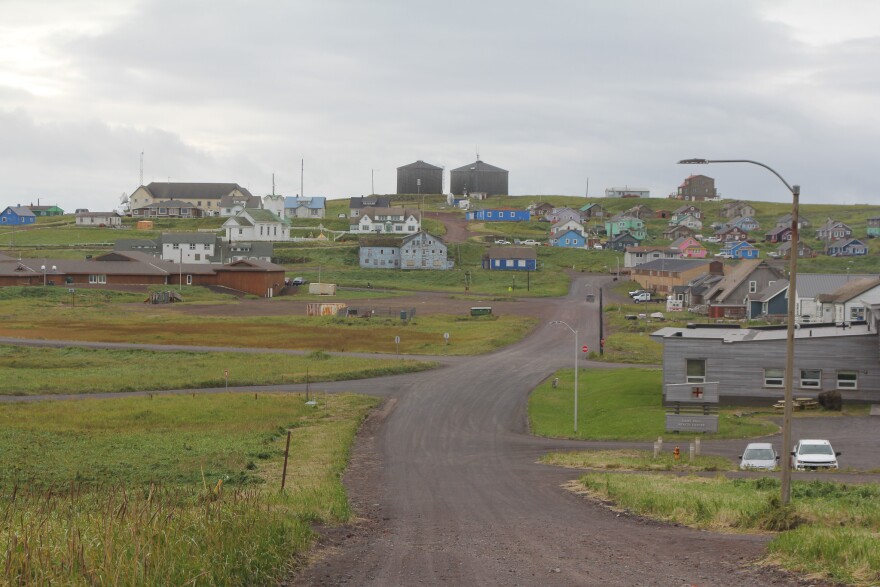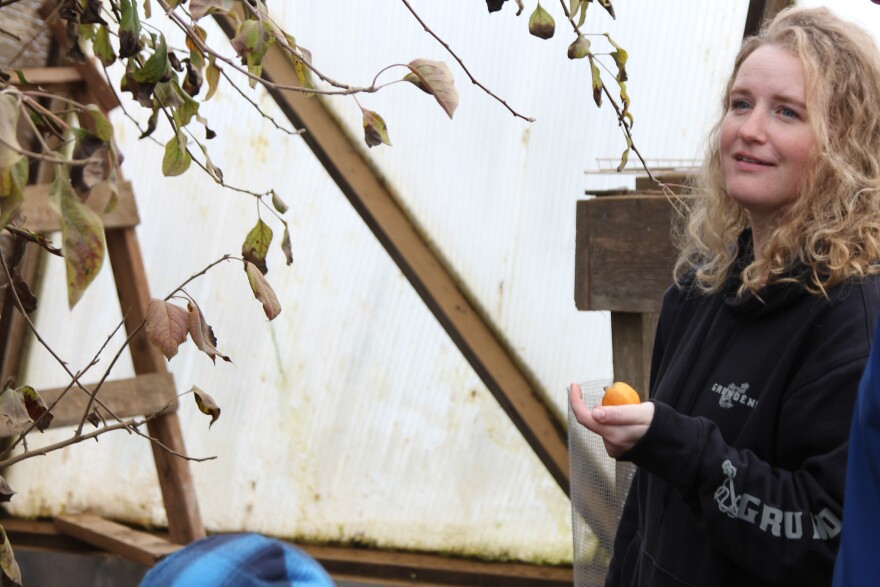This is the first story in a four-part series from the Alaska Desk called Shelf Life, which looks at food security in Alaska.
The Aleut Community Store is the only shop for the Bering Sea village of St. Paul's 300 or so residents. Most people just call it "the store."
You can get everything you need there, from produce and cereal to kitchen appliances and fishing supplies — even a Yamaha four-wheeler.
But in June, the barge that was supposed to bring groceries canceled its trip because of rough weather. Meanwhile the cloud ceiling remained too low for planes to land. When planes can't land and deliveries don't make it in, shelves go bare.
"Eggs were shorted, and then milk, too. Stuff like that," said Ben Bourdukofsky, the store's manager.
In all, 20,000 pounds of groceries got stuck in Anchorage for over a month. When the planes finally did arrive, a lot of that food had spoiled. The tribal government, which runs the store, estimates it had to throw away about a quarter of it.
The food shortage this summer was uncommon, but it wasn't unheard of. The Pribilofs are some of the most remote communities in the nation, and freight can be logistically difficult, expensive and unreliable.

In 2020, the Aleutian and Pribilof Islands Association partnered with the U.S. Department of Agriculture to survey community members across the region and assess their local food systems. They found that most residents rely on local stores, but that fresh, healthy options are often limited and expensive.
The survey also found that subsistence is the second most common source of food for families in the region.
The COVID-19 pandemic made things worse, exposing strains in Alaska's food supply. A 2021 report from the National Oceanic and Atmospheric Administration found that Alaska Native communities felt the brunt of that.
In 2022, Gov. Mike Dunleavy created a food security task force to advise lawmakers on how to strengthen local production and distribution — most of what you find on grocery shelves throughout Alaska still comes in from the Lower 48.
The task force's main recommendation was to establish a state Department of Agriculture, which it said would bolster private agriculture in the state and reduce Alaska's reliance on imports. Farmers and agricultural groups backed the proposal, but lawmakers rejected it during this year's legislative session, largely on procedural grounds.
A response to the pandemic
Nikolski is another island village, about 300 miles south of St. Paul. Roughly 20 to 30 people live in the village, which also has a single store. The community otherwise relies largely on subsistence.
Tribal Administrator Tanya Lestenkof says they have experienced situations similar to this summer's food shortage in St. Paul, notably in 2007.
"Our weather was so bad that we didn't see a plane for like, four months," she said.
Nikolski's subsistence practice revolves around salmon fishing and hunting the roughly 5,000 reindeer that live on the island.
"The only food that I had in the house was the reindeer that I had put up and the salmon, but I had dogs, so the dogs got all the salmon, and I ate all the reindeer. And now I can't eat reindeer anymore," Lestenkof said.
The community responded by building a geodesic dome for a community garden.
Lily Stamm is a project coordinator for the tribal government. She says the community ramped up their investment in greenhouses after the pandemic's supply chain disruptions further exposed the community's vulnerable food supply.

"We realized we were going to have a much greater need for food security out here," she said.
Today, they have five greenhouses, housing everything from community gardens to a sauna and a small pool.
Stamm says Nikolski has made food security and food sovereignty a community project.
"In this village, they've really prioritized it and started some really neat projects," she said.
Subsistence is still critical to food security
But not all community investments in food security work out. In the Aleutians and Pribilofs, high winds and poor soil make growing things very difficult.
St. Paul has tried greenhouse projects, too — including a hydroponic grow center the community built on the ground floor underneath the Aleut Community Store. It ran for several years but eventually shut down.

Today, there aren't any large-scale growing efforts on the island.
The shelves are full in St. Paul's store now. But Bourdukofsky says this summer's food shortage wasn't the first time something like this happened, and it might not be the last. The challenges of isolation and weather aren't going away
People in St. Paul also rely on fur seals for food. Richard Zacharof has helped organize that subsistence harvest for 40 years. He says they'd be lost without it.
"It puts food in the freezers for the winter months for people to enjoy their subsistence foods that we live on," he said. "You know, it's all part of our DNA."


